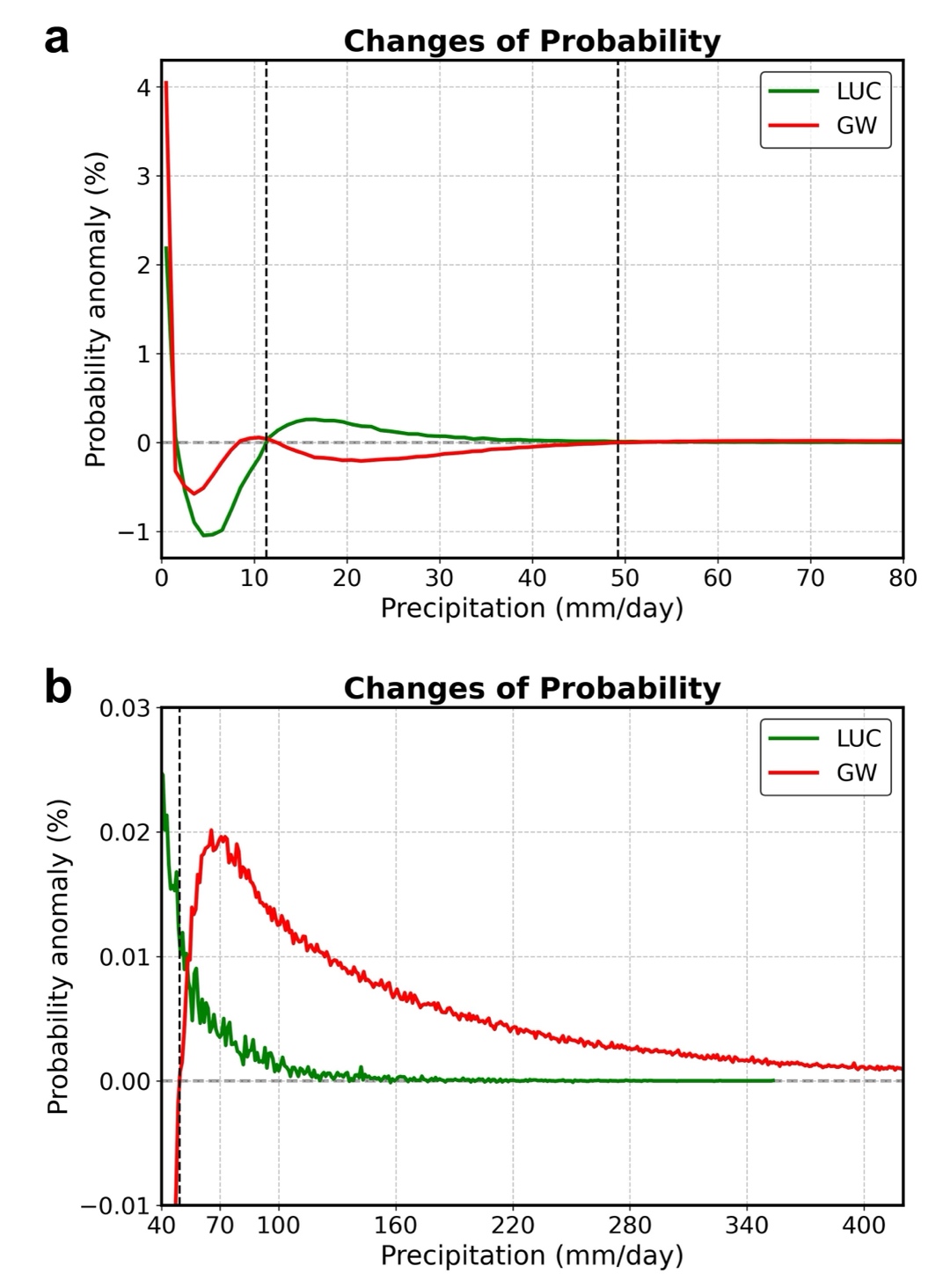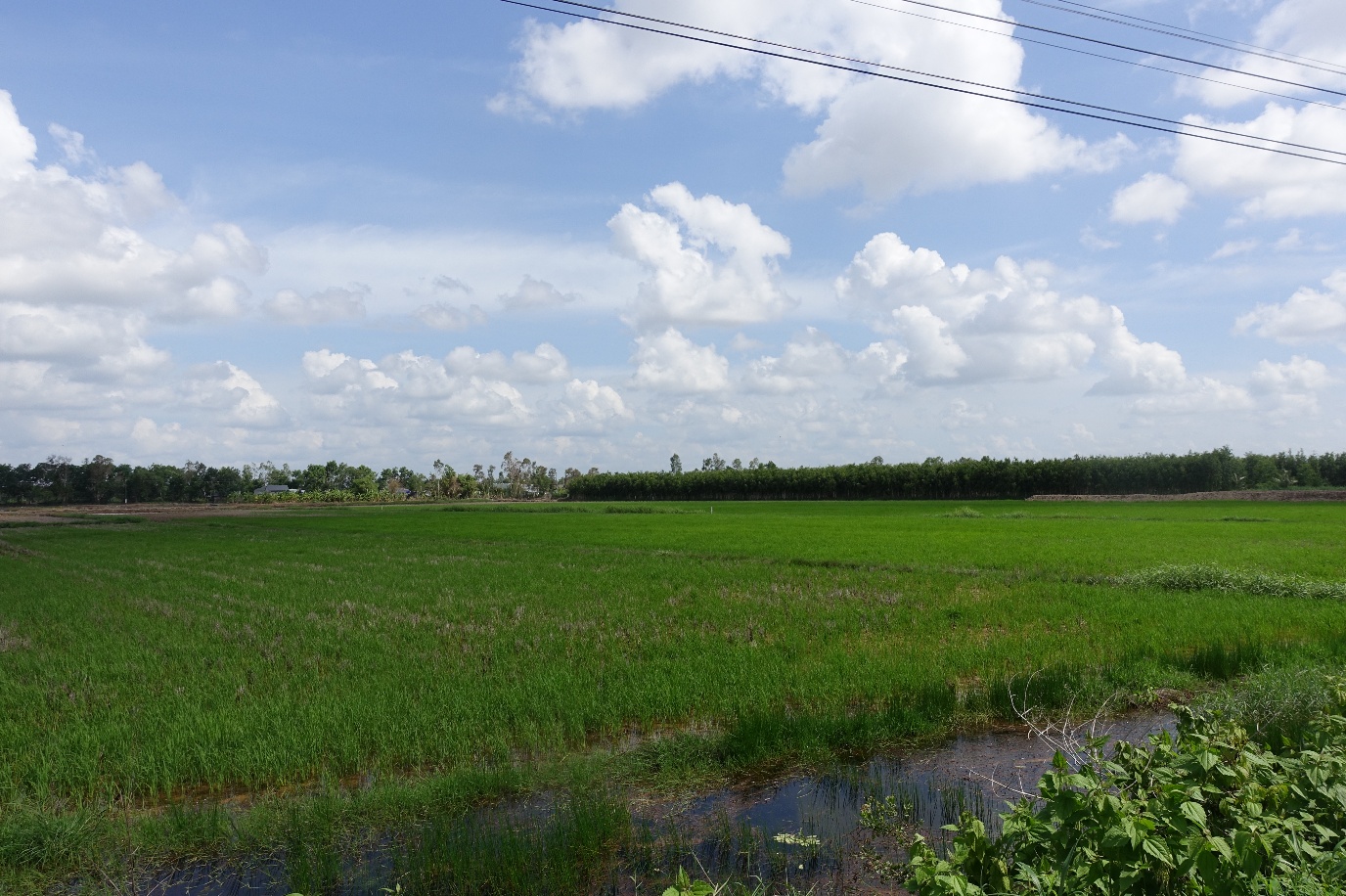Asst. Prof. Yu-Kai Liao, International Degree Program in Climate Change and Sustainable Development
Prof. Min-Hui Lo, Department of Atmospheric Science; International Degree Program in Climate Change and Sustainable Development
Global warming and land use changes are intensifying the Earth's water cycle, making extreme climate events more frequent and more severe. While gradual changes in average climate conditions matter, it is the extremes—heatwaves, floods, and droughts—that most dramatically affect societies, ecosystems, and economies. Europe, for example, has suffered multiple devastating summer heatwaves in recent decades, sparking growing interest in how land surface processes influence the likelihood and intensity of such events in a warming world. At the same time, observational data show a marked increase in heavy rainfall events and a decline in lighter, more moderate precipitation.
Climate model simulations reveal that human influence is shifting the entire probability distribution of daily precipitation (Figure 1), increasing the likelihood of both extremely dry and extremely wet days. This reflects the principle often summarized as "the wet gets wetter, and the dry gets drier." To track and understand these shifts, researchers have developed standardized indices for climate extremes in temperature and precipitation. Statistically, the most damaging events lie in the tails of the distribution—the rare but devastating occurrences. And while no one is immune, these extremes disproportionately affect vulnerable populations such as farmers, fishers, and outdoor laborers. Fortunately, local adaptation strategies—when effectively implemented—can reduce risk, build resilience, support livelihoods, and even boost local GDP.
We're already seeing real-world examples of climate-driven adaptation. In Vietnam's Mekong Delta, rising sea levels and worsening droughts have pushed many communities to shift from traditional rice farming to shrimp aquaculture. Farmers now raise species like whiteleg shrimp, black tiger shrimp, and giant freshwater shrimp. This transformation can enhance incomes and aligns with national goals for global market integration. However, it also introduces new risks—including disease outbreaks and financial instability from crop failures—particularly for small-scale farmers without technical training or access to credit.
To navigate these challenges, farmers and aquaculture businesses in the Mekong Delta are deploying a range of shrimp farming systems tailored to local conditions (Liao, 2025). Inland, many use rice–shrimp rotation systems that take advantage of seasonal salinity changes, regulated by canal sluice gates, to support both salt-tolerant rice and shrimp farming (Figure 2). Along the coast, more farms are shifting to intensive models with above-ground, plastic-lined ponds designed to reduce disease risk and increase productivity (Figure 3). These responses highlight the complex and uneven nature of climate resilience. Ultimately, a community's ability to adapt to climate change depends not only on environmental pressures but also on access to knowledge, infrastructure, and financial resources.  Figure 1 Shifts in daily precipitation probability distributions induced by land use change (LUC) and global warming (GW). Panels (a) and (b) show the relative changes from control runs in LUC and abrupt-4×CO2 simulations, respectively. Bin width is 1 mm/day. Panel (b) focuses on the 40–420 mm/day region. The black dashed lines mark the thresholds (11.31 mm/day for LUC, 49.25 mm/day for GW) where significant increases in extreme precipitation emerge. (Source: Hsu et al. 2025, npj Climate and Atmospheric Science)
Figure 1 Shifts in daily precipitation probability distributions induced by land use change (LUC) and global warming (GW). Panels (a) and (b) show the relative changes from control runs in LUC and abrupt-4×CO2 simulations, respectively. Bin width is 1 mm/day. Panel (b) focuses on the 40–420 mm/day region. The black dashed lines mark the thresholds (11.31 mm/day for LUC, 49.25 mm/day for GW) where significant increases in extreme precipitation emerge. (Source: Hsu et al. 2025, npj Climate and Atmospheric Science)

Figure 2 Alternating rice–shrimp farming in Cà Mau
Source: Yu-Kai Liao

Figure 3 Farmer and technicians checking shrimp health on a superintensive shrimp farm in Bạc Liêu
Source: Yu-Kai Liao
References:
Jie Hsu, Chao-An Chen, Chia-Wei Lan, Chun-Lien Chiang, Chun-Hung Li, Min-Hui Lo (2025) Impact of land use changes and global warming on extreme precipitation patterns in the Maritime Continent. npj Clim Atmos Sci, 8, 5. https://doi.org/10.1038/s41612-024-00883-z
Yu-Kai Liao (2025) Shrimp Economies and Hydrosocial Lives in the Vietnamese Mekong Delta. Water Alternatives, 18, 2. https://www.water-alternatives.org/index.php/alldoc/articles/vol18/v18issue2/780-a18-2-5/file